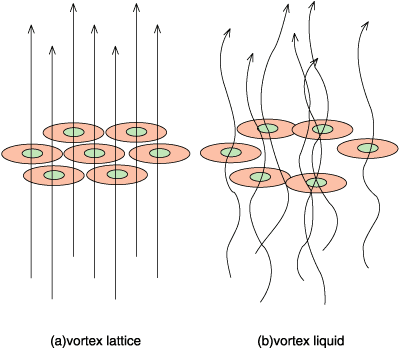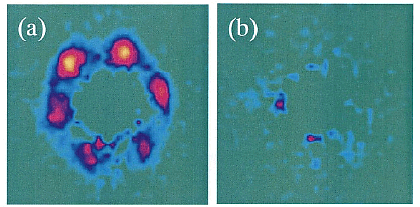 |
||
|
 |
||
|
| Magnetic flux penetrates type-II superconductors as quantized vortices like fine strings. This quantization results from the requirement that the superconducting order parameter be single valued. In a conventional low-Tc superconductor the vortices usually form a triangular vortex lattice below the transition temperature of several Kelvin as atoms form an ordered crystal at low temperature (Fig. 1-6(a)). On the contrary, in a high-Tc superconductor the transition temperature is tens of Kelvin. At such (higher) temperatures the vortices twist and turn owing to thermal fluctuations and move about as liquid (Fig. 1-6(b)). We have succeeded in observing this vortex lattice melting with the small-angle neutron scattering instrument (SANS-J) installed at the JRR-3 (Fig. 1-7). It is a surprising fact that the quantized vortices are physical substances like atoms or molecules changing their states solid to liquid. However, it has been further clarified that there is much variety in the state of the vortices such as vortex splitting. |
| Reference J. Suzuki et al., Small-Angle Neutron Scattering Observation of Vortices in Bi2Sr2CaCu2O8+delta, Proc. of the 11th Int. Symp. on Superconductivity, Springer, 553 (1999). |
| Select a topic in left column |
|
Persistent Quest-Research Activities 2000 Copyright(c)Japan Atomic Energy Research Institute |